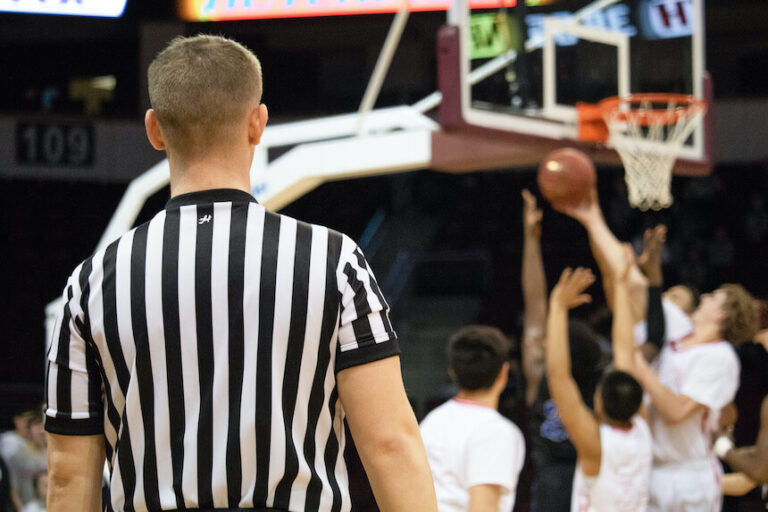What is VMA?
VMA stands for “Maximum Aerobic Speed”. Put simply, MVA can be defined as the speed at which your oxygen consumption is maximal during an effort. Generally, this speed is reached during a very intense run. You can maintain this speed for just a few minutes, from 3 to 7 minutes depending on your level. When you reach this speed, your body consumes 100% of its oxygen reserves. Such an effort naturally requires a recovery phase afterwards.
VMA, combined with heart rate monitoring, is an invaluable indicator for better calibrating your training. By knowing your VMA, you can build a personalised training plan. In particular, you know what pace to set and when. This is particularly important for split training, for example.
Improving your VMA makes it easier to cover long distances without running out of oxygen. By knowing what speed to adopt at the right moment, it is possible not only to sustain the effort for longer but also to improve your timekeeping.
How do you calculate your VMA?
There are several methods for calculating your VMA. Whatever method you choose, it’s important to test regularly. VMA can change a lot depending on the training you do. Training using your current VMA, rather than the previous year’s VMA, which may no longer have anything to do with it, will be much more effective.
VMA will also vary if you stop training, after an injury for example. Two weeks out of training is enough to reduce your VMA by 3%.
Calculating your VMA two or three times a year can therefore be useful for optimising your training plan and improving your performance.
Laboratory stress test
Carrying out a stress test in a laboratory is always safer. The test is carried out under the supervision of a doctor, a cardiologist to be precise. The laboratory may be located in an establishment specialising in sport or in a hospital.
The exercise test used to calculate VMA takes place on a treadmill. Electrodes are used to continuously measure heart rate. The doctor gradually increases the speed of the treadmill while monitoring your heart rate. When your heart rate is at its maximum and you keep up the pace for 3 to 4 minutes, you have reached your maximum aerobic speed.
The field test
If you can’t do a stress test in the laboratory, you can always do one in the field. Ideally, you should have access to an athletics track or equivalent equipment. You can take the test on your own or be accompanied by a professional. Many athletics clubs organise one or more days each year when you can take the test to calculate your VMA.

There are several tests for calculating your VMA. Three of them are the best known because they are reputed to be reliable yet simple to perform. To determine your VMA as accurately as possible, it’s advisable to perform at least two of the three tests.
1- The Vameval test
The Vameval test is run at a progressive intensity. Stones are placed every twenty metres along the track. You set off along the track and have to reach each marker by the time a signal sounds. The speed required to reach the markers will increase by 0.5 km/h every minute, starting at around 8 km/h. The test stops when you are at least two metres behind the position of the stud when the acoustic signal sounds.
2- Half-Cooper test / 6-minute VMA calculation
The half-Cooper test, like the Vameval test, involves gradually increasing the intensity of the effort made. The test is performed after a short warm-up, to ensure maximum efficiency for the body.
The test consists of covering the greatest possible distance in 6 minutes. Then it’s easy to calculate your MVA. For example, if you cover 1200 metres in 6 minutes, your MVA is 12 kilometres per hour.
3- Astrand test / 3-minute VMA calculation
Unlike the other two tests, the Astrand test requires the effort to be stable over time.
The aim is to cover as much distance as possible in 3 minutes.
The VMA is calculated by taking the performance achieved over 3 minutes and 30 seconds.
If, for example, you cover 700 metres in 3 minutes, your MAV will be 12 km/h ((700/210)*3600).
How can I improve my VMA?
The percentage of your MVA that you will be able to maintain during an effort depends on the event. For example, if you’re jogging at a moderate pace to work on your endurance, you’ll be between 65% and 70% of your MVA. On a ten-kilometre run, you’ll be closer to 90%. If you’re running a half-marathon or a marathon, you should be at 85% and 80% of your MVA respectively.
So it’s important to work on improving your VMA. The higher it is, the better your performance and times will be. There’s nothing like a 30-30 split session to improve your VMA.
A 30-30 split session consists of alternating fast 30-second runs with slow 30-second runs. A recovery phase of between 1? and 3 minutes (depending on your level) follows each run. During the fast run, you should be at 100% of your VMA. During the slow run, you should be at 65% of your MVA.
One 30-30 split session a week should enable you to improve your VMA.
The right sports bag
To carry all your stuff, the Men’s Sports Bags and Women’s Sports Bags Karkoa will do the job perfectly. With their multiple compartments, you’ll be able to organise your sports gear and carry it separately from your spares and toiletries. Available as a shoulder bag or backpack, Karkoa bags come in a range of colours.


















